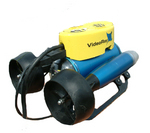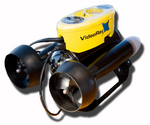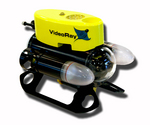Introduction to ROV OperationsROVs (Remotely Operated Vehicles) enable observation of underwater (and other liquid) environments from the surface. In addition, some work, such as manipulation, payload delivery and retrieval, can be carried out by ROVs. ROV systems consist of a vehicle, control console, and tether or umbilical cable that connects the vehicle to a topside. ROV vehicles typically include propulsion systems, video cameras, sensors and can be equipped with additional accessories. Control consoles include a user interface to control the ROV, display monitor for the video imagery from the ROV and may include data storage and processing capabilities for accessories. Advanced state-of-the-art ROV systems can include autonomous control and target recognition and tracking. ApplicationsROVs originally served as "swimming" cameras providing a view of the underwater world to the surface. The desire to use them in a wider range of water conditions and for specific purposes such as search and retrieval, scientific investigation and inspections has led to numerous technological advances. These advances in turn generate an evolutionary cycle of more opportunities for additional uses. The Applications Guides section provides a list of common industries in which ROVs are used. As the the capabilities of ROV systems continue to increase and the knowledge of these systems becomes more widespread, the diversity and number of applications for ROVs is expanding exponentially. EquipmentPersonnel and RequirementsTypical ProjectWhile there might not be a "typical" ROV project, there are several elements that are common to most ROV projects. Phases: Planning Mobilization Operations Recovery Post Processing |
|
|
|










